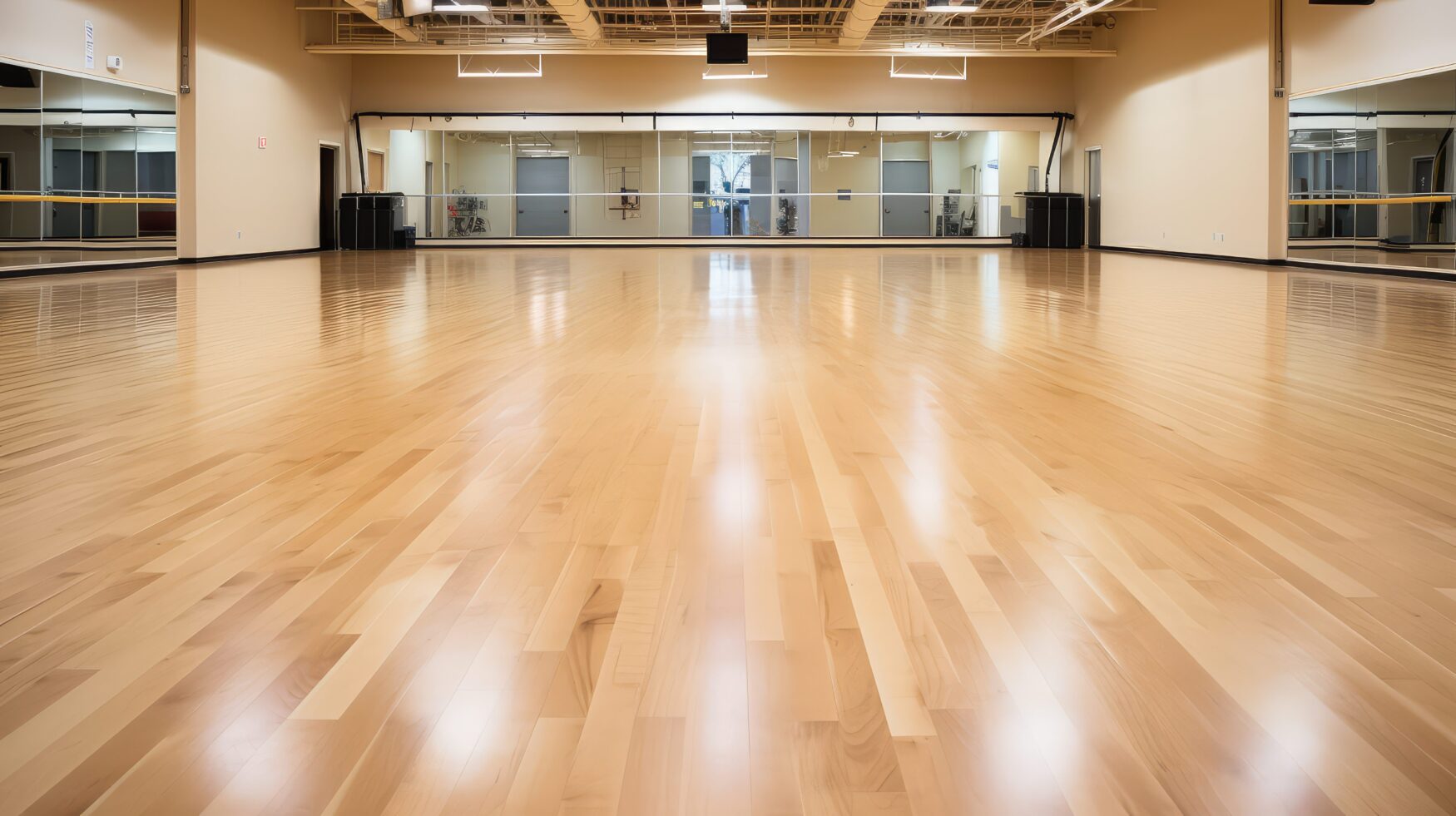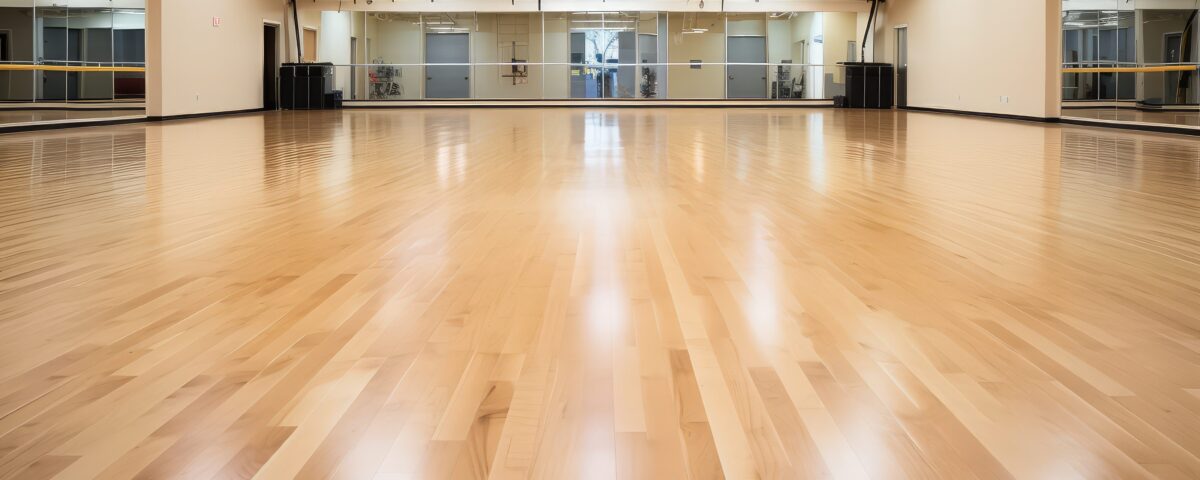Differences Between VCT vs LVT Flooring

When comparing VCT vs LVT flooring, particularly LVT and VCT, it’s important to understand what makes each option different in terms of material composition, design possibilities, installation process, and long-term performance. Both vinyl composition tile (VCT) and luxury vinyl tile (LVT) are widely used in commercial spaces, but they cater to different priorities such as cost, maintenance, and aesthetics. Choosing between these two flooring types requires a careful evaluation of durability, design versatility, and maintenance costs.
What Are VCT and LVT Flooring Types?
When deciding between flooring solutions for your next project, it’s important to know what makes LVT and VCT flooring different. These two flooring types fall under the vinyl flooring family but offer distinct advantages for various commercial settings.
What is VCT Flooring?
Vinyl composition tile, commonly known as vinyl composite tile or VCT flooring, is made from a composite material that typically combines natural limestone, filler materials, color pigments, and thermoplastic binders. These tiles are popular in healthcare facilities, schools, and retail spaces because of their lower initial cost and proven performance in high traffic areas. VCT tiles require proper sealing and regular polishing to maintain their appearance, especially in spaces with heavy foot traffic.
What is LVT Flooring (Luxury Vinyl Tile)?
Luxury vinyl tile (LVT flooring) is a more advanced form of vinyl flooring. It is constructed with multiple layers, including a photographic film layer that mimics natural materials such as wood and stone, topped with a protective wear layer for enhanced durability. LVT products are known for their superior design capabilities, offering a high-end appearance while maintaining minimal maintenance requirements compared to other flooring materials.
Why Are VCT and LVT Popular Choices for Commercial Spaces?
Both VCT and LVT offer cost-effective flooring solutions for commercial spaces. VCT products are often chosen for their lower upfront costs, while LVT products appeal to those who want the look of natural materials with minimal maintenance. Understanding their construction leads us to the next crucial aspect: material composition.
| Feature | VCT Flooring (Vinyl Composition Tile) | LVT Flooring (Luxury Vinyl Tile) |
| Material Composition | Composite material with natural limestone, vinyl resins, filler materials, and thermoplastic binders | Multi-layer composite flooring with photographic film layer, vinyl resins, and protective wear layer |
| Design Possibilities | Limited colors and patterns, basic design options | Superior design capabilities with wood, stone, and ceramic tile looks |
| Installation Process | Glue-down installation, requires sealing and waxing | Glue-down or click-lock installation, no waxing required |
| Upfront Costs | Lower initial cost | Higher upfront cost |
| Maintenance Needs | Requires regular polishing, resealing, and topical wax | Minimal maintenance requirements with simple cleaning |
| Durability | Good for high traffic areas but lower resistance to scratches and moisture | Enhanced durability with protective wear layer and better resistance to moisture, scratches, and stains |
| Long-Term Costs | Higher due to frequent maintenance and possible replacement | Lower long-term costs due to durability and minimal maintenance |
| Best Applications | Schools, healthcare facilities, and budget-focused commercial spaces | Offices, luxury retail, hospitality, and design-driven commercial projects |
Material Composition: How Are VCT and LVT Flooring Made?
Material composition greatly influences performance, particularly the durable aspects and maintenance costs. Comparing VCT vs LVT flooring highlights their key structural differences.
VCT Flooring Material Composition Explained
VCT tiles are made from a composite material that combines natural limestone, color pigments, vinyl resins, and thermoplastic binders. This flooring material is porous by nature and requires topical wax for design integrity and surface protection. Regular polishing is essential to maintain its look, especially in areas with heavy foot traffic.
LVT Flooring Material Composition: What Makes It “Luxury Vinyl”?
LVT flooring uses multiple layers, including a photographic film layer that replicates the look of natural materials, a composite core for strength, and a protective wear layer for enhanced durability. This composition makes LVT products highly resistant to scratches, stains, and water, offering superior performance compared to other flooring materials like ceramic tiles or vinyl composite tile.
Comparing Durability: How Material Differences Impact Longevity
The composite flooring design of VCT makes it less resistant to moisture and scratches than LVT, coupled with its lower static load resistance. On the other hand, LVT flooring’s multi-layer construction ensures greater design integrity and reduced need for frequent replacement. This brings us to an equally important factor: design possibilities.
Design Possibilities: Aesthetic Choices with VCT and LVT Flooring
Both VCT and LVT flooring provide design versatility, but the level of customization and visual appeal varies significantly.
Color & Pattern Options in VCT Flooring
VCT tiles, a type of vinyl tile, are available in a variety of colors and patterns, making them suitable for large commercial settings that require a consistent aesthetic. However, because of their material composition, design options are often limited compared to LVT products.
Design Versatility of LVT (Luxury Vinyl) Flooring
LVT products offer superior design capabilities with photographic film layers that mimic natural materials like wood, stone, or ceramic tiles. This design versatility makes them an attractive choice for businesses looking for high-end flooring solutions without the high cost of natural materials.
Which Flooring Type Offers Better Visual Appeal?
When it comes to achieving a luxury look with minimal maintenance, LVT flooring stands out. Its realistic finishes and superior design capabilities provide a same-level visual appeal to natural flooring without the maintenance costs. But design is only part of the story—understanding the installation process is equally important.
Installation Process: What to Expect with VCT and LVT Flooring
Installation affects both initial cost and long-term performance. Understanding how VCT and LVT are installed can help in planning your next project.
How Is VCT Flooring Installed?
VCT flooring installation involves applying adhesive to the subfloor, placing the tiles, and sealing the surface with topical wax. Proper sealing and regular maintenance are crucial to extend the life of VCT tiles.
How Is LVT Flooring Installed?
LVT flooring can be installed using glue-down methods or floating click-lock systems. This flexibility simplifies the installation process and reduces downtime, making it an excellent choice for high traffic commercial spaces.
Time, Cost & Labor: Comparing the Installation Process for VCT vs LVT
VCT tiles often come with lower initial cost but require more labor-intensive installation and frequent maintenance. LVT products may cost more upfront but have lower long term costs due to minimal maintenance requirements. Next, we’ll explore how these differences impact day-to-day care.
Maintenance & Cleaning: Caring for VCT and LVT Flooring
Maintenance costs and effort are key considerations for any flooring type, especially in commercial settings with heavy foot traffic.
Routine Cleaning for VCT Flooring in Commercial Spaces
VCT flooring requires regular polishing, waxing, and resealing to maintain its appearance. In spaces like healthcare facilities, this can increase long-term costs due to frequent replacement or upkeep.
Low-Maintenance Appeal of LVT Flooring
LVT flooring, known for its low maintenance, requires minimal upkeep, needing only simple cleaning with basic products. Its protective wear layer eliminates the need for waxing and reduces the risk of damage from heavy foot traffic.
Long-Term Care Costs: Which Flooring Type Is Easier to Maintain?
While VCT tiles have a lower initial cost, their maintenance costs can exceed those of LVT products over time. LVT’s minimal maintenance requirements make it more cost-effective in the long run. But durability plays an equally vital role in flooring decisions.
Performance & Durability: Which Flooring Lasts Longer?
Durability is a major factor when selecting flooring for high traffic areas.
How VCT Flooring Holds Up in High-Traffic Areas
VCT flooring performs well under heavy foot traffic but requires regular polishing to maintain its protective layer. It has lower static load resistance compared to LVT, making it prone to wear in certain commercial settings.
LVT Flooring’s Resistance to Scratches, Moisture, and Wear
LVT products are designed with a thicker wear layer, providing enhanced durability and better resistance to moisture, scratches, and stains. This makes them suitable for healthcare facilities and other commercial spaces where hygiene and longevity are crucial.
Which Performs Better in Commercial Environments: VCT or LVT?
For commercial spaces requiring durable flooring with low maintenance, LVT offers a clear advantage. Now let’s see how costs stack up when comparing these two options.
Cost Comparison: Is VCT or LVT More Budget-Friendly?
Choosing between VCT and vinyl flooring options like LVT involves balancing upfront costs with long-term expenses.
Upfront Costs: Material and Installation Expenses
VCT flooring offers a lower initial cost and is often preferred for budget-conscious projects. LVT flooring has a higher upfront cost but saves money over time with minimal maintenance requirements.
Long-Term Value: Maintenance, Repairs, and Replacement Costs
Frequent replacement, regular polishing, and resealing make VCT more expensive in the long run compared to other materials. LVT, with its superior wear layer and minimal upkeep, reduces long term costs significantly.
Which Flooring Type Offers the Best ROI for Businesses?
For those seeking a cost-effective long-term solution, LVT provides better return on investment by combining durability, design integrity, and low maintenance. But cost isn’t the only deciding factor — applications matter too.
Where to Use VCT and LVT Flooring: Best Applications
The choice between VCT and LVT depends on the intended use and desired performance.
Commercial Settings Ideal for VCT Flooring
VCT products are commonly used in schools, healthcare facilities, and retail stores where cost efficiency and frequent cleaning schedules are acceptable.
Spaces Where LVT Flooring Shines
LVT flooring is ideal for offices, luxury retail spaces, and hospitality environments where design possibilities, such as mimicking wood and stone, and durability are key.
VCT vs LVT: Matching the Flooring Type to Your Needs
By understanding the performance and design differences, you can match the flooring type to your specific needs. But making the right choice often requires expert advice.
Making the Right Choice: VCT vs LVT Flooring for Your Facility
Choosing between VCT and LVT is about more than just cost — it’s about balancing aesthetics, durability, and maintenance.
How to Decide Between VCT and LVT for Your Business
Evaluate factors like foot traffic, desired design integrity, and maintenance expectations before selecting a flooring type.
Questions to Ask Before Choosing a Flooring Type
- What is the expected foot traffic?
- How important is design versatility?
- Are minimal maintenance requirements a priority?
Why Professional Consultation Matters (Insights from Scher Flooring Services)
Scher Flooring Services offers expert guidance on selecting the right flooring for your commercial project, ensuring you get the most value from your investment.
Choosing Between VCT and LVT Flooring in 2025
VCT and LVT flooring offer different benefits in terms of material composition, design possibilities, installation process, and maintenance costs. While VCT tiles provide a lower initial cost, LVT products deliver superior design capabilities, enhanced durability, and lower long term costs. For personalized recommendations tailored to your commercial spaces, consulting Scher Flooring Services ensures your next project is backed by expert advice.
Stay Updated!
Sign up for email updates and stay in the loop about about our services and promotions.
We’re here to answer any questions you have about our commercial floor cleaning, restoration, and maintenance services.
Get a Free Quote Today!
Scher Flooring Services is a locally and family owned and operated commercial floor cleaning, maintenance and restoration company in business for over 25 years.
"*" indicates required fields


